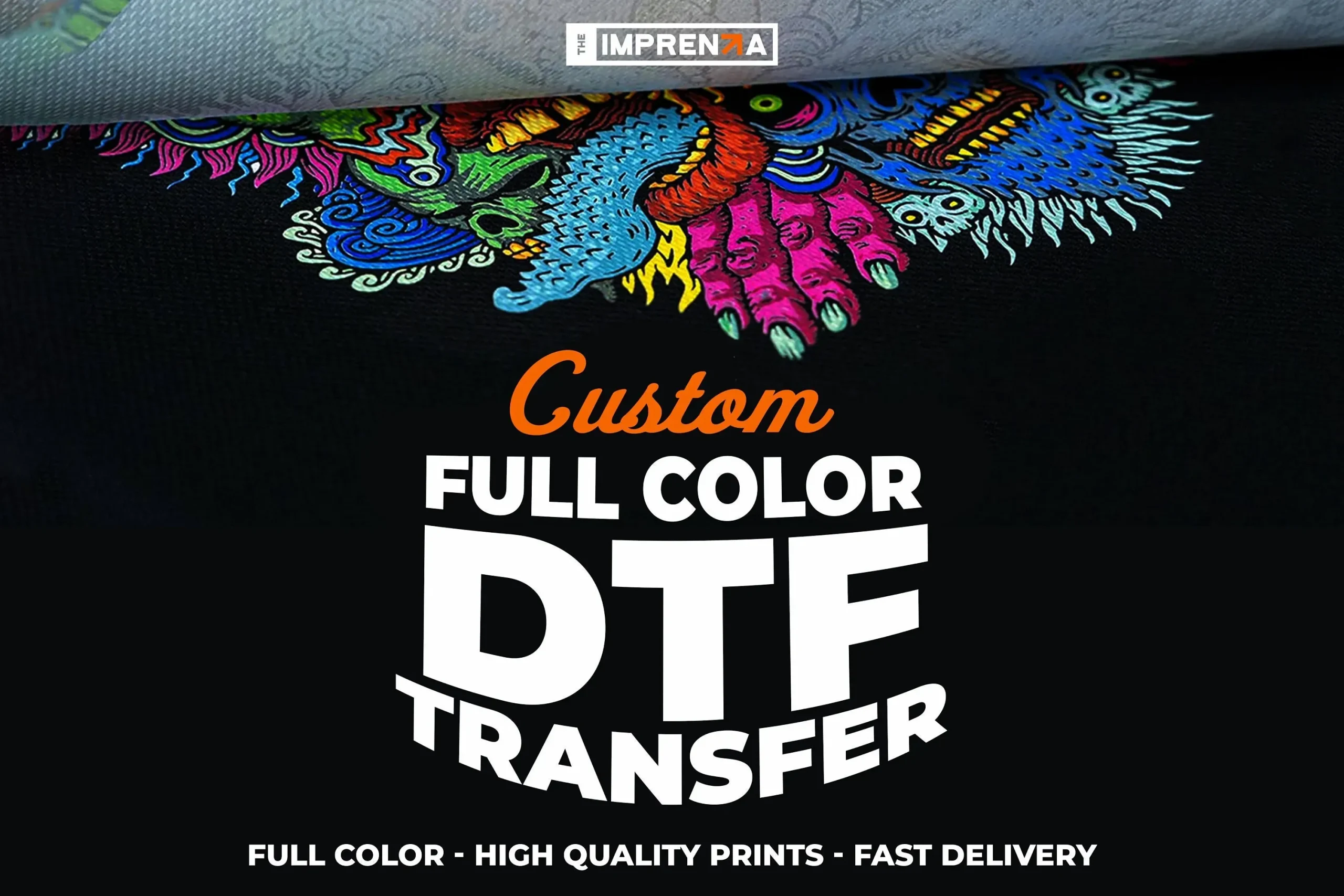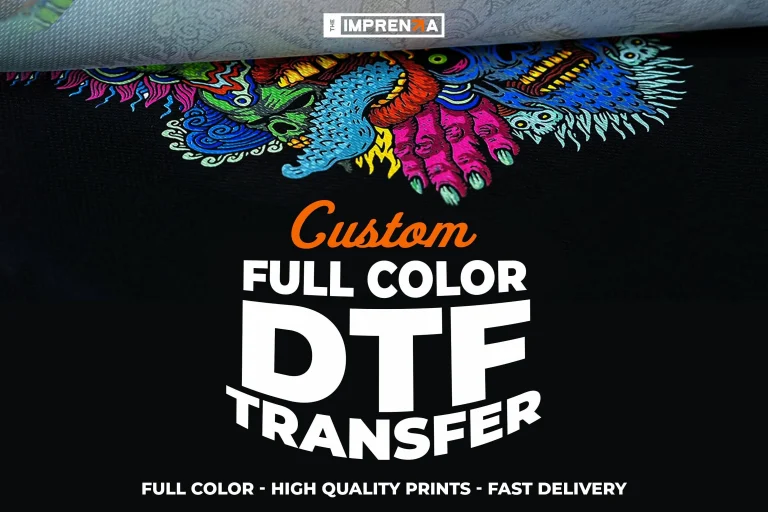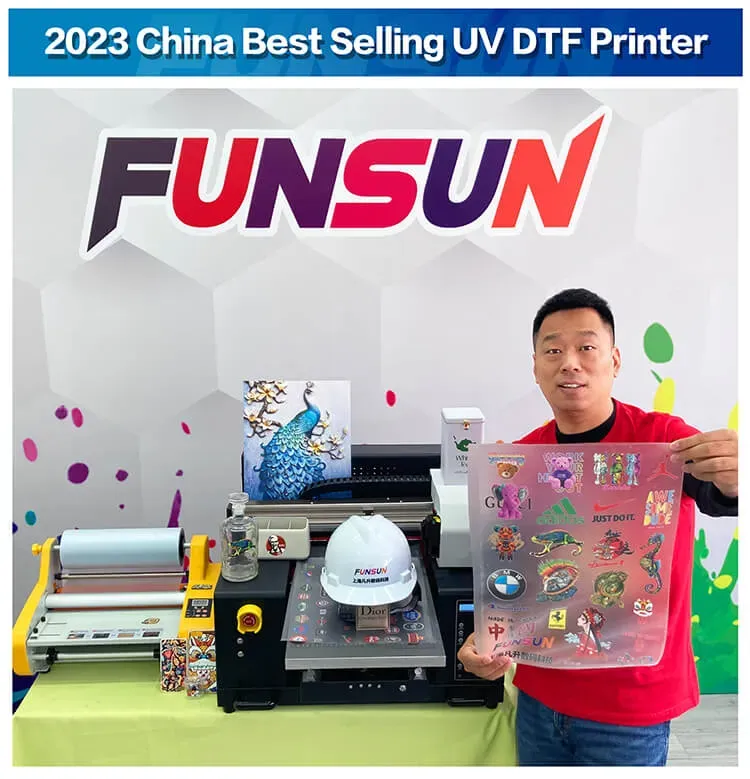DTF Transfers: The Future of Custom Printing and Design
In the realm of custom printing, DTF transfers are revolutionizing how designs are applied to fabric, showcasing the innovative strides made in print technology. Direct-to-Film (DTF) printing technology offers a brilliant solution for vibrant, durable designs that cater to an ever-growing market hungry for personalized products. With the ability to print on various materials, DTF transfers provide businesses with flexibility that few other methods can match, allowing for creativity in every project. This introduction to DTF printing highlights not just its unique advantages, but also the emerging trends that are reshaping the industry. As consumers increasingly seek quality and customization, understanding the benefits of DTF transfers becomes essential for anyone looking to thrive in the competitive landscape of custom printing.
The rise of DTF printing marks a significant shift in the landscape of custom textile applications. Known as direct-to-film printing, this cutting-edge method enables creators to effectively transfer intricate designs onto a myriad of fabrics using specialized films. As businesses explore the potential of direct-to-film technologies, they discover a host of advantages, from high-definition graphics to quicker turnaround times. With an emphasis on sustainability and efficiency in printing, this innovative approach aligns perfectly with contemporary consumer aspirations for eco-friendly and customizable products. Delving into the world of DTF transfers reveals both opportunities and challenges that define the future of print creativity.
Understanding DTF Printing Technology
Direct-to-Film (DTF) printing technology revolutionizes how custom designs are transferred onto fabric. Unlike traditional methods, DTF uses a specialized film to apply vibrant and durable prints through heat and pressure. This innovative technique allows for high-resolution graphics with exceptional color fidelity, making it ideal for a wide range of applications, from fashion to promotional items. Furthermore, the water-based inks used in DTF make the process more environmentally friendly than many other types of printing, aligning with the growing need for sustainable practices in the industry.
The versatility of DTF printing technology is evident in its ability to adhere to various fabric types, including cotton, polyester, and blends thereof. This flexibility ensures that businesses can cater to diverse customer needs without being confined to specific materials. Moreover, as consumer preferences shift towards unique and personalized products, DTF transfers can accommodate small and large orders alike, making this technology particularly advantageous for both startup brands and established businesses.
The Advantages of DTF Transfers for Custom Printing
One of the most compelling advantages of DTF transfers is their cost-effectiveness. Businesses operating in the custom printing sector often face high initial setup costs with traditional printing methods such as screen printing or direct-to-garment (DTG) printing. However, DTF transfers require significantly lower upfront investment, making them accessible for small businesses and startups. The ability to produce smaller batches without incurring substantial costs further enhances their appeal in a market increasingly dominated by demands for custom and personalized items.
In addition to being economically viable, DTF transfers boast remarkable quality in terms of durability and finish. The printing process ensures that colors remain vivid even after multiple washes, providing customers with products that withstand the test of time. This durability is a key selling point for businesses that aim to deliver superior quality to their clients, thereby boosting customer satisfaction and repeat purchases. As a result, the benefits of DTF transfers extend beyond cost savings to encompass quality enhancement, making them an attractive option for custom printing.
Recent Innovations in DTF Printing
The recent surge in technological innovation surrounding DTF printing is transforming the industry landscape. Newer DTF printers are emerging equipped with advanced features that enhance not only print quality but also production speed, allowing businesses to fulfill customer orders efficiently. These innovations mean that entrepreneurs can take advantage of quick turnaround times, meeting the growing consumer appetite for rapid fulfillment of custom products without compromising quality.
Furthermore, advancements in adhesive technologies used in DTF printing have significantly improved the adhesion of transfers to various fabrics. This progress helps to maintain the integrity of designs during normal wear and washing procedures, establishing DTF as a long-term solution for durability. As industries continue to evolve, these innovations set the stage for DTF technology to remain competitive against other printing methods, ensuring its place as a leading option in custom printing.
Challenges Facing DTF Transfers in the Market
Despite the remarkable advantages of DTF transfers, challenges persist that businesses must navigate. The market for custom printing is fiercely competitive, with traditional methods such as screen printing holding significant market share. This competition can pose a barrier for new entrants in the DTF sphere, where establishing a unique value proposition is crucial for standing out. As DTF technology develops, ongoing innovation will be essential for it to differentiate itself from established printing methods.
Additionally, there exists a learning curve associated with mastering the DTF printing process. For newcomers, understanding the nuances of temperature settings, transfer timings, and printer operation is paramount for achieving the desired output. Businesses may have to invest considerable time and resources into training their staff to effectively utilize DTF technology. Embracing this learning curve is essential for achieving success in the competitive landscape of custom printing.
Market Trends and Growth of DTF Printing
The DTF printing market is currently experiencing significant growth, with predictions estimating a compound annual growth rate (CAGR) of around 15% in the coming years. This upward trend can largely be attributed to the increasing demand for custom apparel and branded merchandise, prompting many businesses to explore DTF technology as a feasible and effective option. The rising interest in sustainable and eco-friendly solutions within the industry also boosts the attractiveness of DTF, as its water-based inks appeal to environmentally conscious consumers.
Furthermore, the growth of e-commerce and direct-to-consumer business models has fueled demand for personalized products, aligning perfectly with the capabilities of DTF transfers. The ability to produce high-quality, unique designs efficiently allows businesses to tap into niche markets and cater to consumer demands for individuality. As the market for custom printing continues expanding, DTF technology stands poised to capture a considerable share by offering innovative solutions that resonate with contemporary consumer desires.
The Future of Custom Printing with DTF Technology
As we look ahead, DTF transfers are set to redefine the landscape of custom printing. With its blend of versatility, cost-effectiveness, and environmentally friendly practices, DTF technology is well-positioned to address the evolving demands of consumers and businesses alike. The future will likely see even more advancements that enhance the DTF process, enabling users to achieve higher quality prints with increased efficiency.
Moreover, as DTF technology gains traction, we can expect a more widespread adoption among businesses of all sizes. Entrepreneurs entering the market will find that DTF printing offers a compelling solution for differentiating their brands in a crowded environment. By leveraging the distinct advantages offered by DTF transfers, businesses can capitalize on the growing trend toward customization and personalization, effectively leading the charge into the new era of custom printing.
Frequently Asked Questions
What are the main benefits of DTF transfers in custom printing?
DTF transfers offer several benefits in custom printing, including versatility across various fabrics, cost-effectiveness due to lower setup costs, and environmental sustainability from using water-based inks. This flexibility allows businesses to create vibrant designs for different applications, appealing to both small startups and larger enterprises.
How does DTF printing technology differ from traditional printing methods?
DTF printing technology differs from traditional methods like screen printing and DTG by printing designs onto a film that is then transferred onto fabric using heat and pressure. This process enables higher quality prints with better color vibrancy and durability while being more economically viable for small businesses.
What challenges do businesses face when adopting DTF transfers?
Businesses adopting DTF transfers may encounter challenges such as competition from established printing methods and a learning curve associated with mastering DTF printing techniques. New users might need to invest in training and familiarize themselves with temperature and transfer settings for optimal results.
Why is DTF printing becoming increasingly popular among small businesses?
DTF printing is gaining popularity among small businesses due to its low startup costs and the ability to create custom designs on demand. Its user-friendly operation and minimal initial investment allow entrepreneurs to differentiate themselves in a competitive market while meeting the growing demand for personalized products.
How does DTF printing technology ensure high-quality prints?
DTF printing technology ensures high-quality prints through advancements in printer mechanisms and the use of innovative adhesives. This technology allows for vibrant colors and excellent durability, maintaining print integrity even after multiple washes, making it a competitive choice for custom printing.
What are the environmental benefits of using DTF transfers in printing?
Using DTF transfers in printing has environmental benefits as it employs primarily water-based inks, which are safer and less harmful compared to traditional solvents. This eco-friendly approach appeals to consumers’ increasing awareness of sustainability and helps businesses reduce their ecological footprint while offering cleaner product options.
| Key Point | Description |
|---|---|
| Definition | DTF (Direct-to-Film) transfers involve printing designs onto a film that is then transferred to fabric using heat and pressure. |
| Advantages | 1. Versatility: Can be applied to various materials including cotton and polyester. 2. Cost-Effectiveness: Lower setup costs compared to screen printing. 3. Eco-Friendly: Utilizes water-based inks for a sustainable approach. |
| Recent Developments | 1. Market Growth: Projected CAGR of 15% in the DTF printing market. 2. Technological Innovations: Improved print quality and fast printing mechanisms. 3. Increased Adoption: More small businesses embracing DTF due to low barriers to entry. |
| Challenges | 1. Competition with other methods like screen and DTG printing. 2. Learning Curve: New users must adapt to DTF printing techniques. |
Summary
DTF Transfers represent a significant leap forward in the custom printing landscape, illustrating how technology can meet the evolving needs of consumers and businesses. This innovative printing method not only provides vibrant and durable prints but also prioritizes sustainability through the use of eco-friendly water-based inks. As the demand for personalized products soars, DTF Transfers are uniquely situated to become a preferred choice among entrepreneurs looking to make their mark in the industry. Despite facing challenges such as competition and a learning curve, those who harness the power of DTF technology are poised to thrive in this dynamic market.






